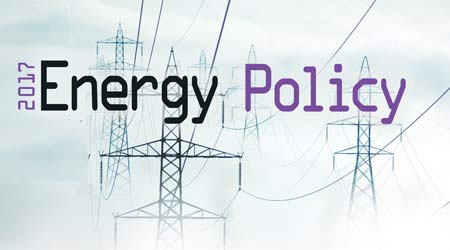Forecasting Energy Policy in 2017: Energy Efficiency Still a Major Opportunity for FMs
First of a four-part cover story looking at how Trump Administration policy may affect energy policy for the road ahead.
The commercial real estate industry is in a state of watchful waiting as the Trump administration settles into its first few weeks in office. The bulk of headline-grabbing developments from the new administration have not had much in the way of direct ramifications for the industry, but decisions yet to be finalized at the time of this writing will have a potential for impact.
As energy policy in general shapes up, facility managers can take this time to educate themselves on some of the factors at play and what to keep an eye on as news develops. Moves in federal energy policy could potentially impact the landscapes of energy procurement, energy efficiency, taxes, and incentives. Here is a high-level view of what facility managers might expect.
Early actions
Energy efficiency has not yet been a direct focus of the Trump administration’s public discussion, and it is not expected to be as high a priority as it was under the Obama administration.
“We do believe, from talking with people in the agencies, that there is going to be a policy shift and budgetary shift away from energy efficiency and renewables,” says Jim Edelson, director of codes and policy for the New Buildings Institute. “Already the administration has frozen four pending appliance standards, and we expect more to be rolled back.” These included new energy efficiency standards for commercial boilers, portable air conditioners, walk-in coolers, and uninterruptible power supplies.
Under the freeze, the regulations cannot be sent to the Office of the Federal Register until agency leaders are in place. Some in the industry perceive the freeze as an opportunity to rework the standards, in particular the boiler standard.
Also up in the air is an energy bill with energy efficiency provisions dealing specifically with building codes, which is something that BOMA has been advocating for a long time, says John Bryant, vice president of advocacy, codes and standards with BOMA International. The Energy Savings and Industrial Competitiveness Act has passed the House and Senate in different versions in the past, but hasn’t yet made it into law. “So the question is: Is this something that Congress still wants to move forward with and that the president would consider a top priority?” Bryant says. “We hope so, but I think when you look at energy, they’re looking at much broader implications than energy efficiency.”
Impact on energy procurement
In broad strokes, the Trump administration seems to be focused on developing access to fossil fuels, as evidenced by campaign promises and early actions such as moving forward on the Dakota Access Pipeline project.
While some anticipate this could lead to cheaper energy prices, many experts don’t share that opinion, at least as it pertains to the energy sources used in buildings. The main reason is natural gas prices are already very low and aren’t expected to fall significantly further. Facility managers have already benefited from those low prices. Natural gas and electricity are the most widely used energy sources in commercial buildings, according to the most recent Commercial Buildings Energy Consumption Survey (CBECS) from the U.S. Energy Information Administration (EIA). What’s more, natural gas prices are now so low that the fuel is neck-and-neck with coal for generating electricity. The 2017 EIA forecast is 32 percent of U.S. total utility-scale generation for gas and 31 percent for coal. Partly as a result, many utilities have shuttered coal-fired power plants and replaced them with new natural gas generating plants. The bottom line: Federal actions to increase the supply of oil, or to remove restrictions on the burning of coal, wouldn’t lead to lower heating and electricity costs for facilities.
In addition, the aging infrastructure of the grid and the costs associated with either maintaining or improving it are expected to offset any decreases in energy prices.
“I don’t imagine we’re going to see significantly lowered prices of our electricity based on anything that the federal government may choose to do in terms of changing regulations with regards to fossil fuel development,” says Jennifer Layke, global director of the World Resources Institute’s energy program, and manager of WRI’s global building efficiency network. Utilities have already constructed natural gas fired power plants to take advantage of low prices, and Layke says that utility plans don’t currently include “massive amounts of additional” power plant construction.
Related Topics:















